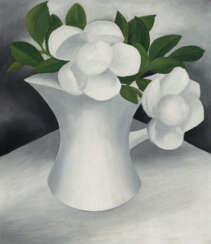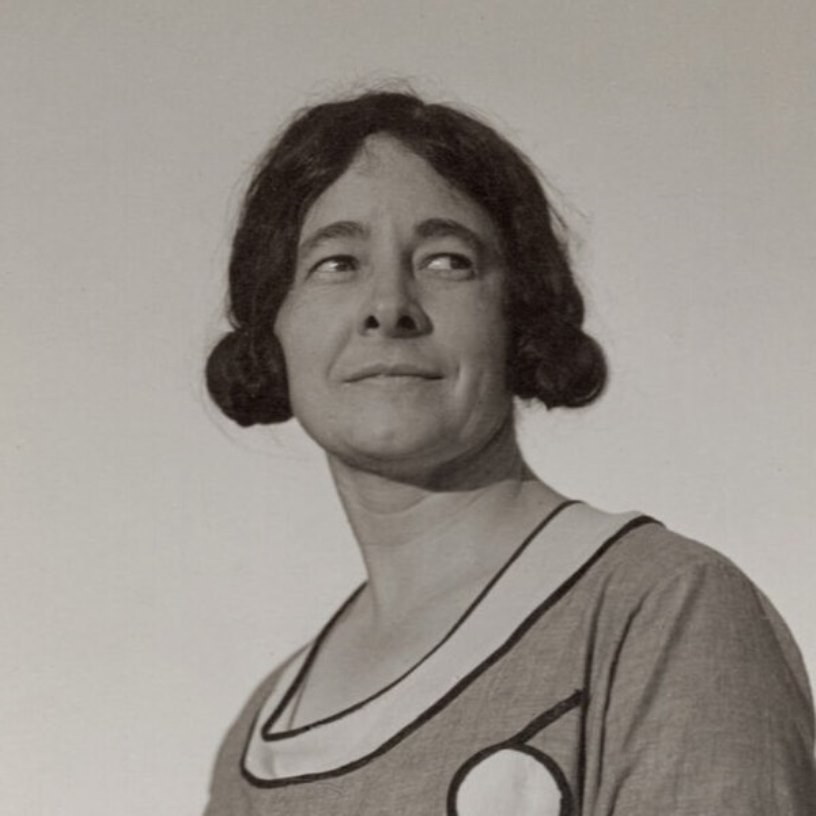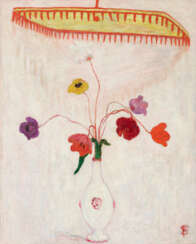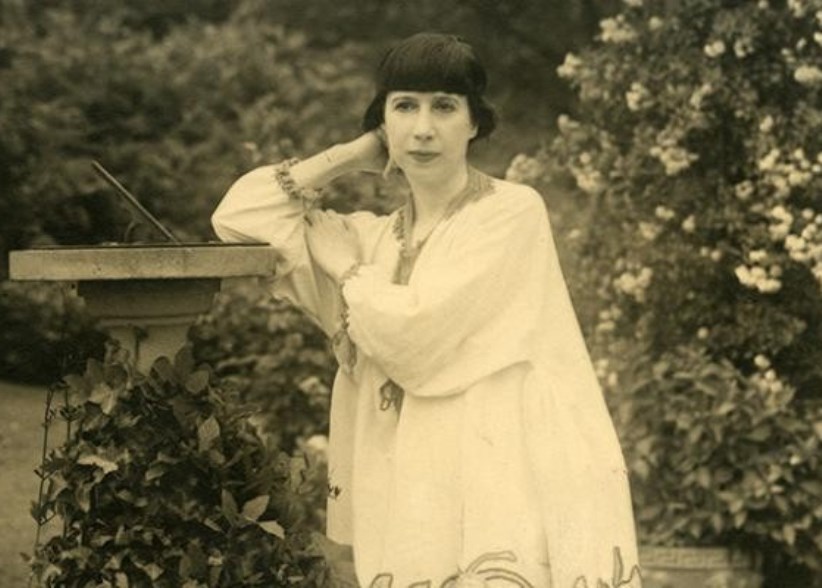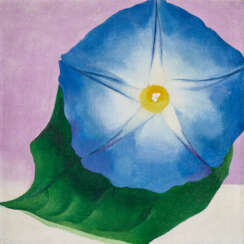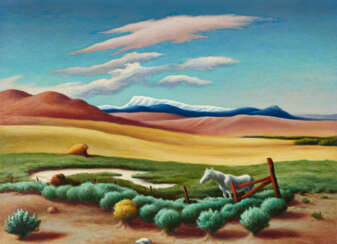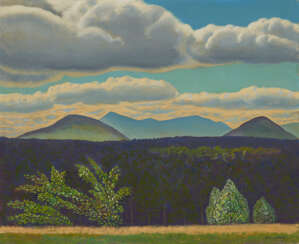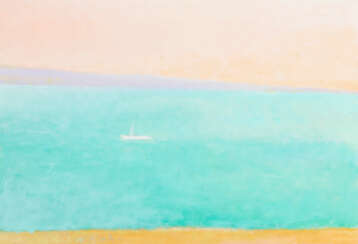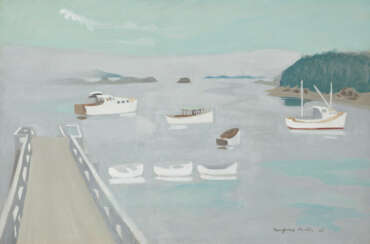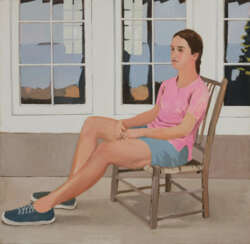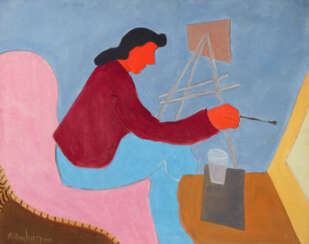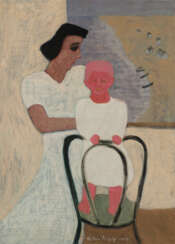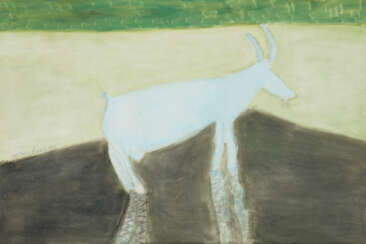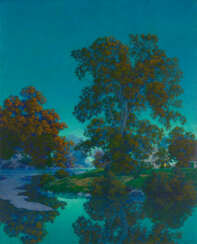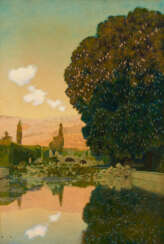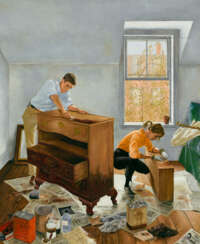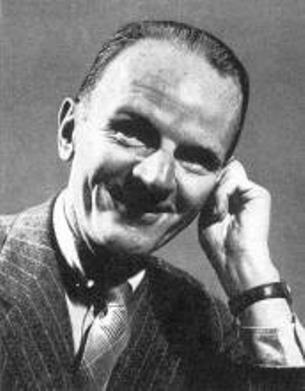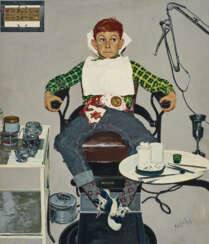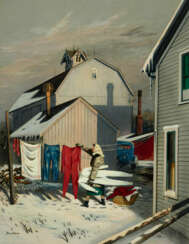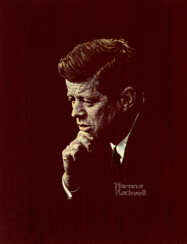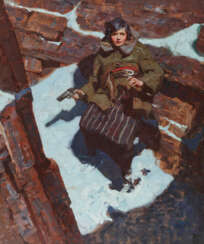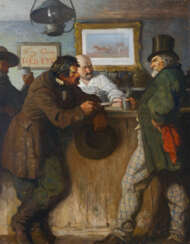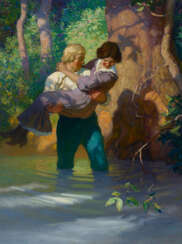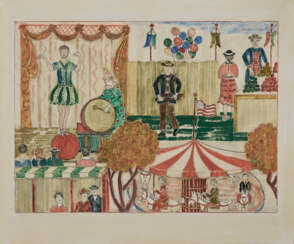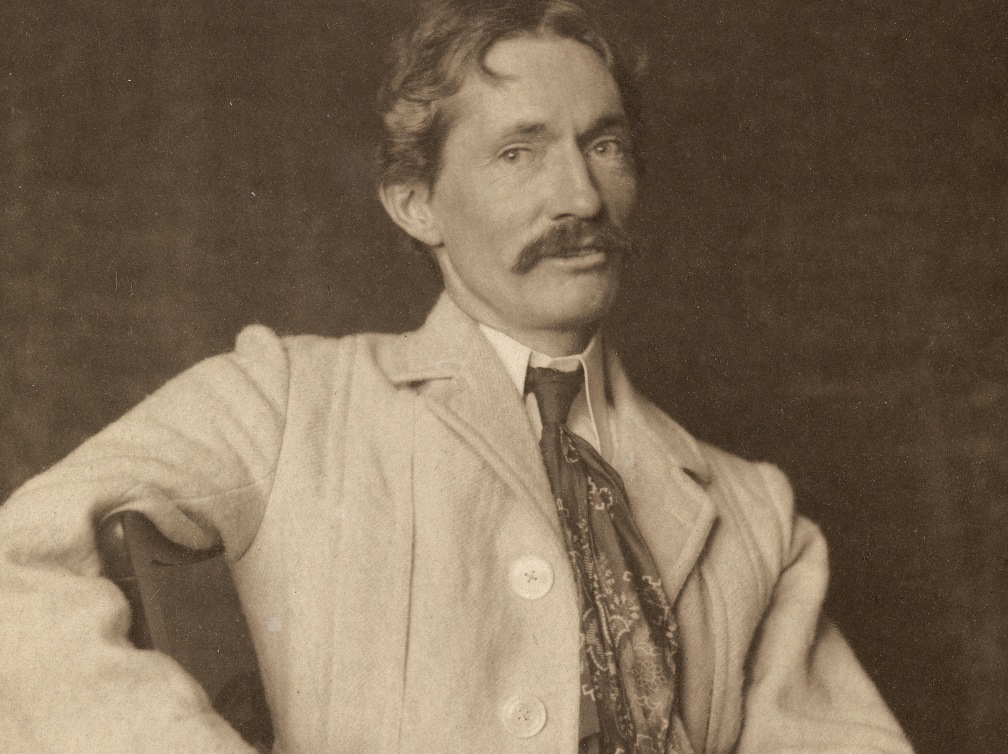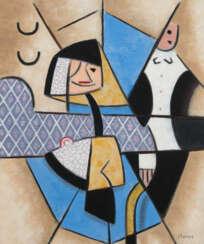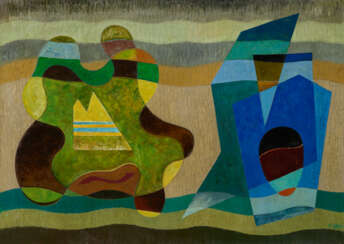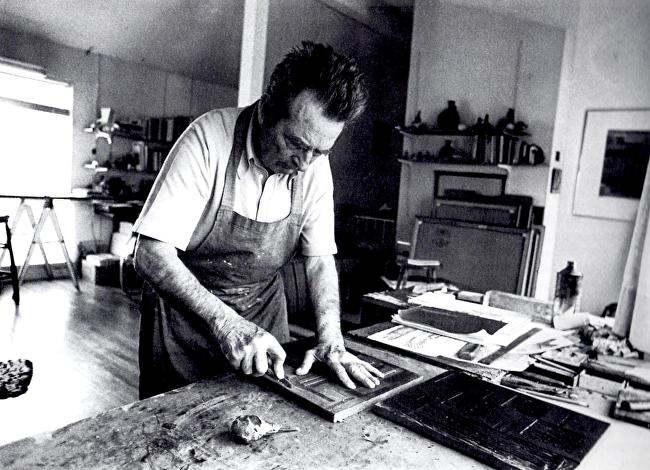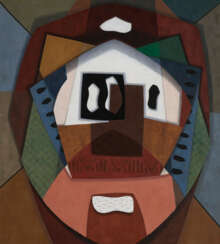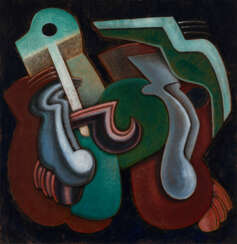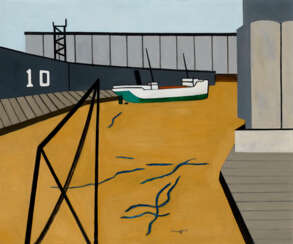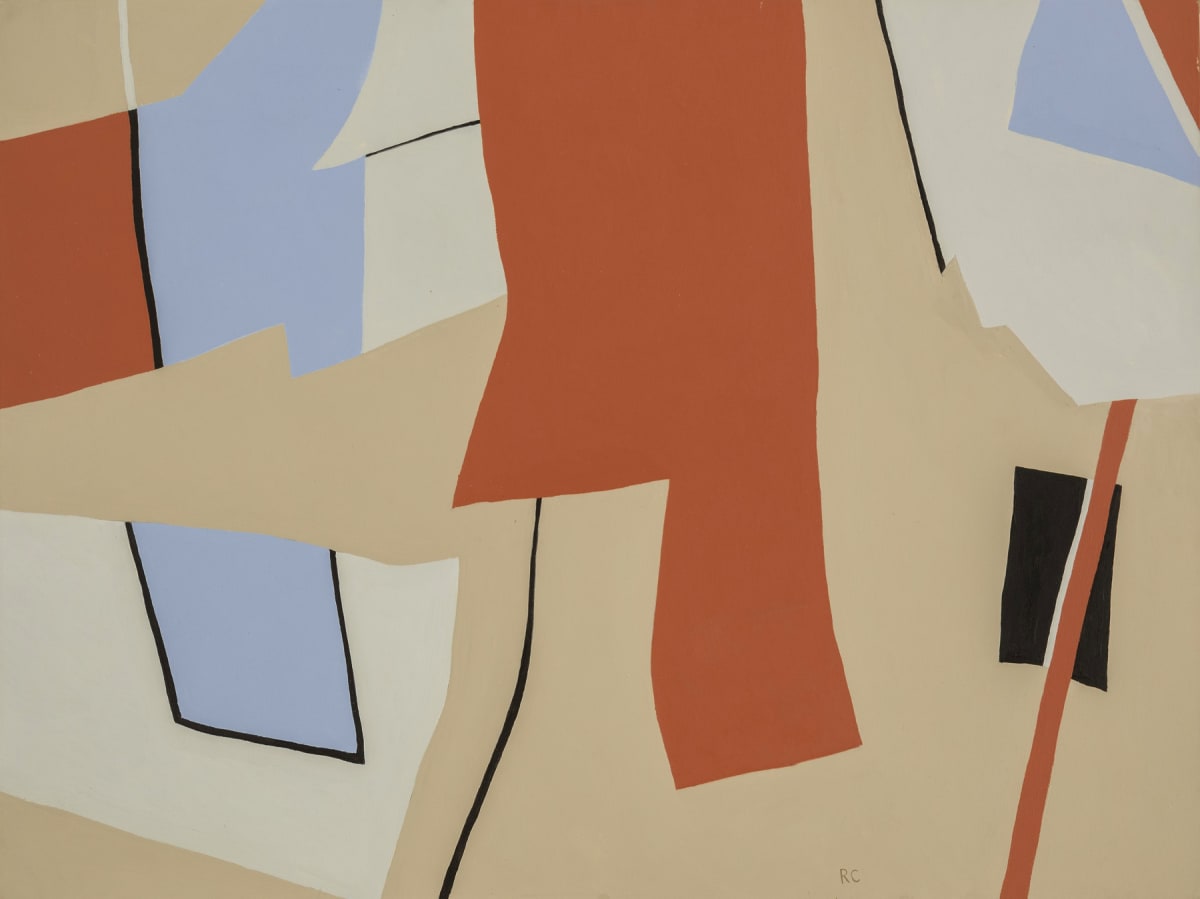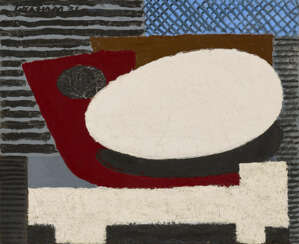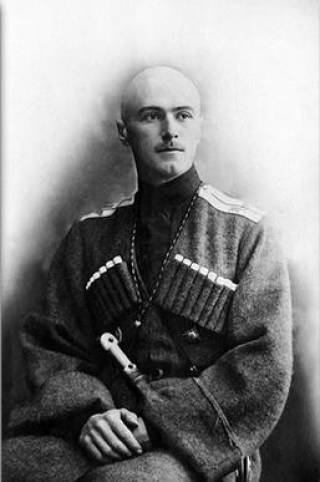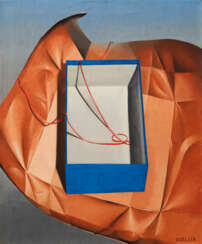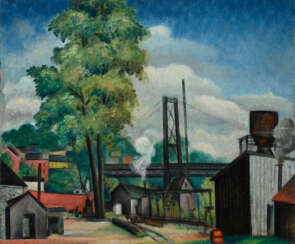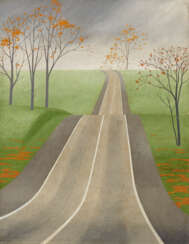
Paintings — Modern American Art
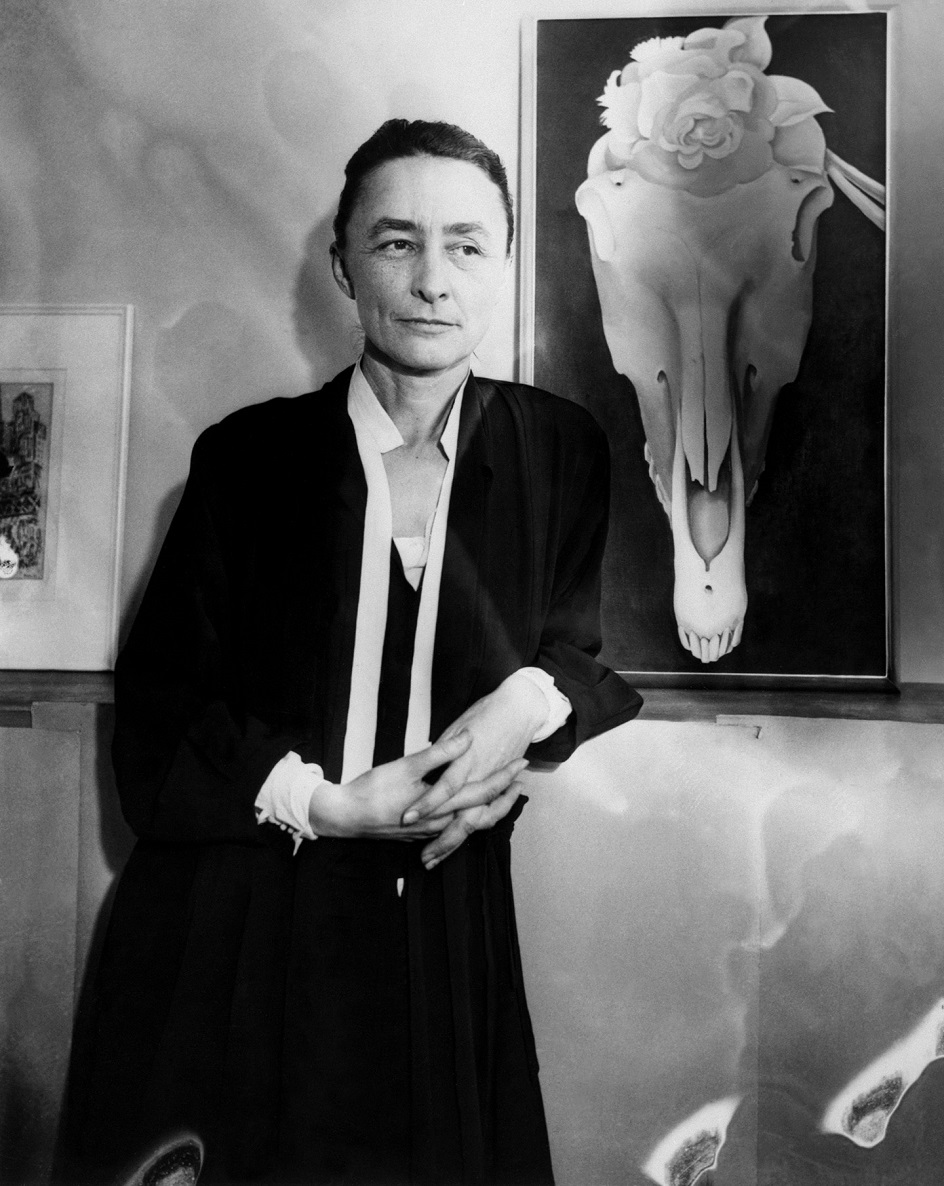
Georgia Totto O'Keeffe was an American modernist artist. She was known for her paintings of enlarged flowers, New York skyscrapers, and New Mexico landscapes. O'Keeffe has been called the "Mother of American modernism".
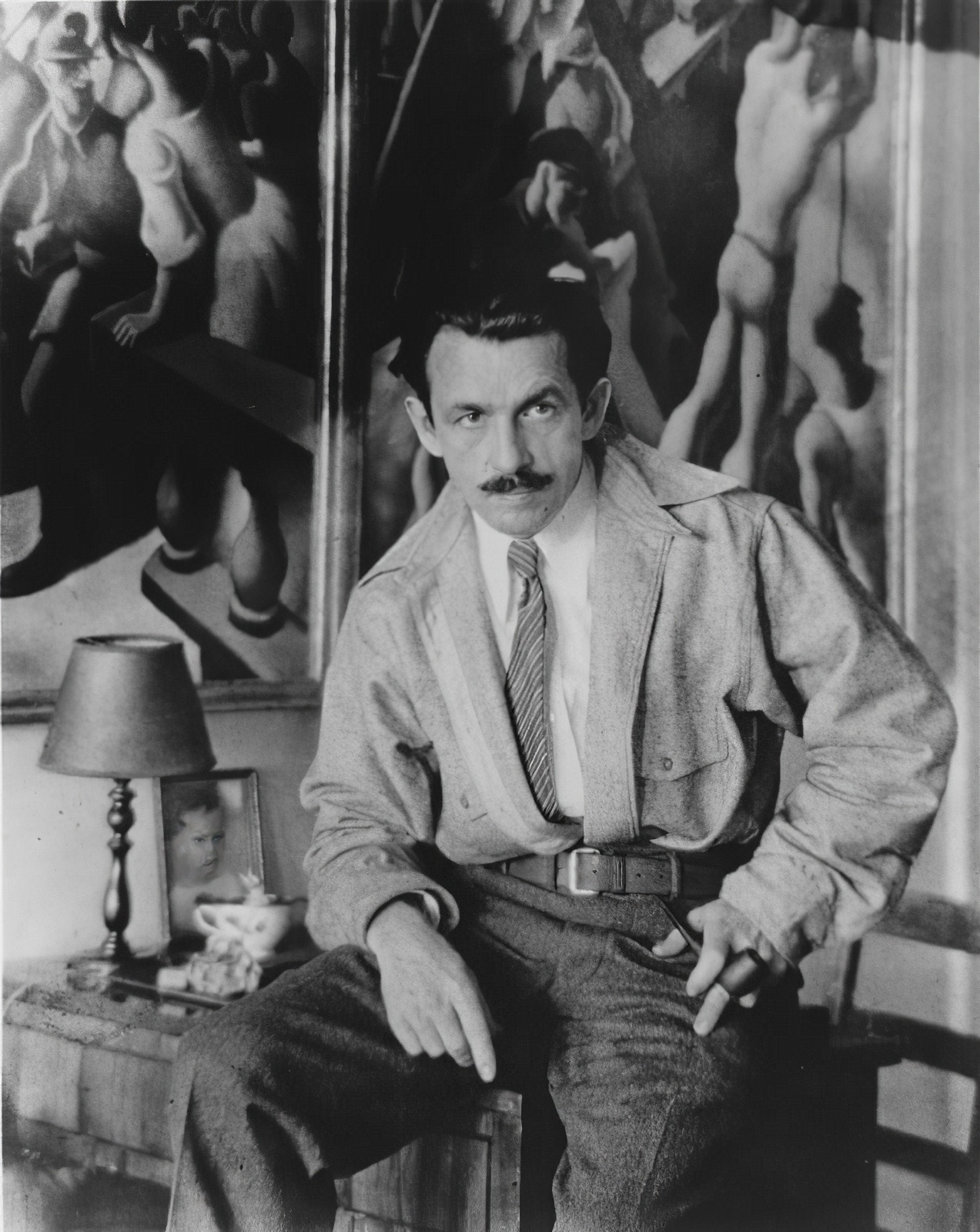
Thomas Hart Benton was an American artist renowned for his role in defining the Regionalist art movement, which emphasized scenes of everyday life in the United States. Born in Neosho, Missouri, in 1889, Benton came from a family deeply rooted in politics, but he chose to channel his energies into art, moving away from his prescribed path in politics to a more creative and influential trajectory in the visual arts.
Benton's work often carried a narrative quality, depicting the lives and struggles of working-class Americans with a focus on the Midwest. His major works include large-scale murals such as America Today and The Arts of Life in America, which showcased his unique blend of detailed realism and dynamic composition. Benton's ability to convey profound social messages through his art made his works both celebrated and controversial during his time.
Many of Benton's pieces are displayed in prominent museums across the United States. Notable among these are his murals in the Metropolitan Museum of Art and the powerful scenes captured in his final major work, The Sources of Country Music, at the Country Music Hall of Fame in Nashville. This work, completed towards the end of his life, encapsulates the essence of American cultural history that Benton so loved.
If you're passionate about the dynamic and storytelling art of Thomas Hart Benton, consider signing up for updates. You'll receive news on new product sales and auction events specifically related to Benton's art. This is a wonderful opportunity for collectors and experts in art and antiques to stay informed about one of America's defining Regionalist painters.
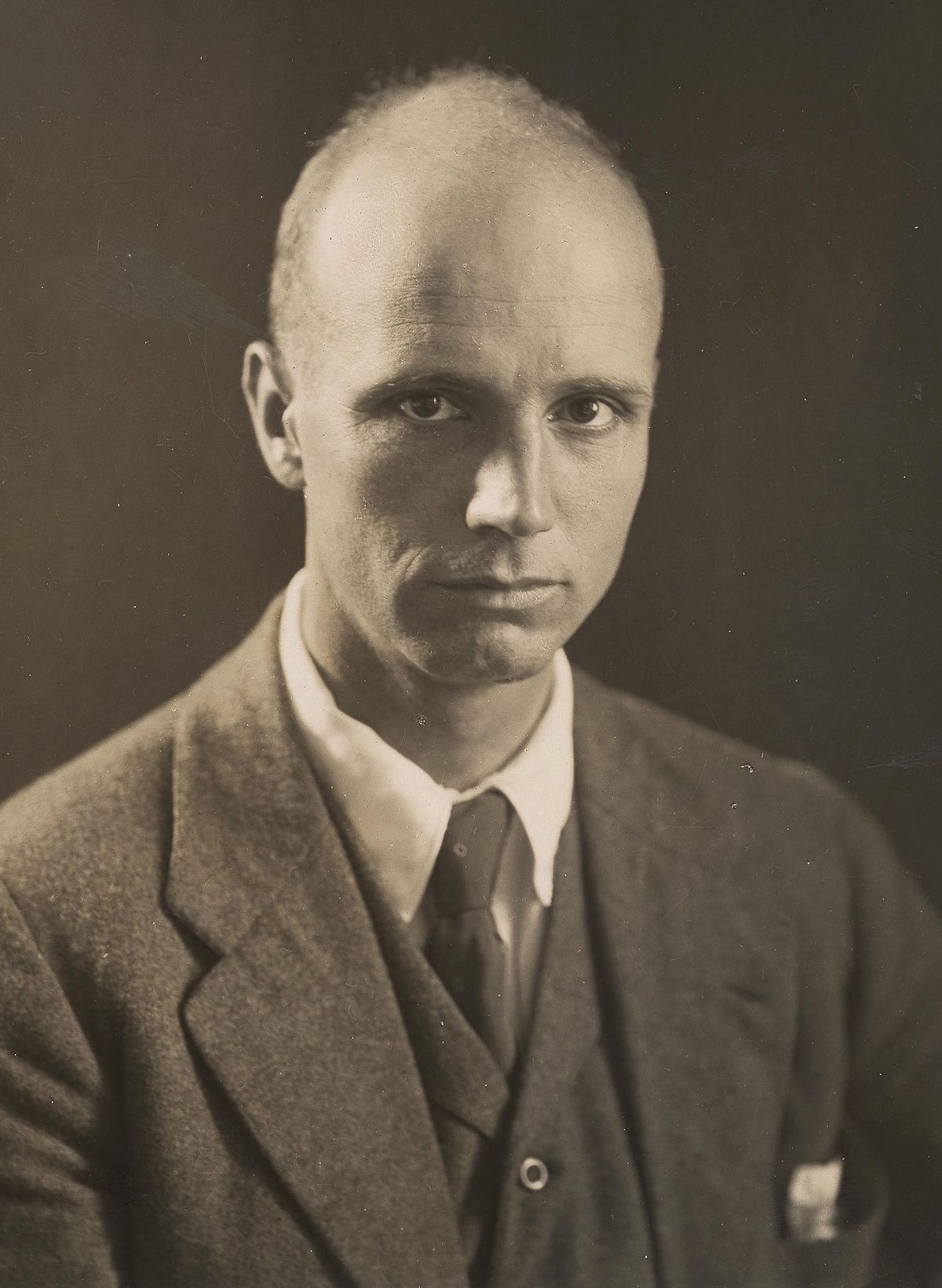
Rockwell Kent is an American artist, illustrator, and writer. He was born and raised in New York City and began his art career in the early 1920s.
Kent worked in a variety of genres and styles, including realism, expressionism, and cubism. Kent became known for his book illustrations as well as his paintings and prints. His work was frequently published in Harper's Weekly, The New York Times, and Vanity Fair magazines and newspapers.
He also illustrated many books, including famous works by Ernest Hemingway and Herman Melville. Kent was also an activist and political activist. He was an advocate of socialist ideals and participated in political movements. In addition, he was a traveler and explorer, having made several trips to Alaska and other far northern territories.
Kent was also a writer and author of several books, including the autobiographical novel It's Me, O Lord! and a book about his travels. Kent's style was recognizable and original, and he was known for his powerful compositions, bright colors, and pronounced contours. His work remained popular even after his death in 1971, and many can be seen in museums and art galleries around the world.
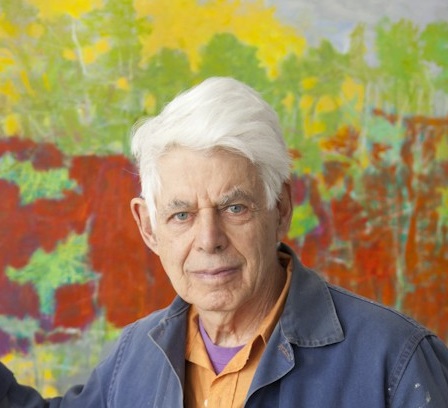
Wolf Kahn was a German-born American artist who painted mostly landscapes. Kahn worked in oil and pastel, and his style has been described as a combination of picturesque landscapes and painterly abstraction.
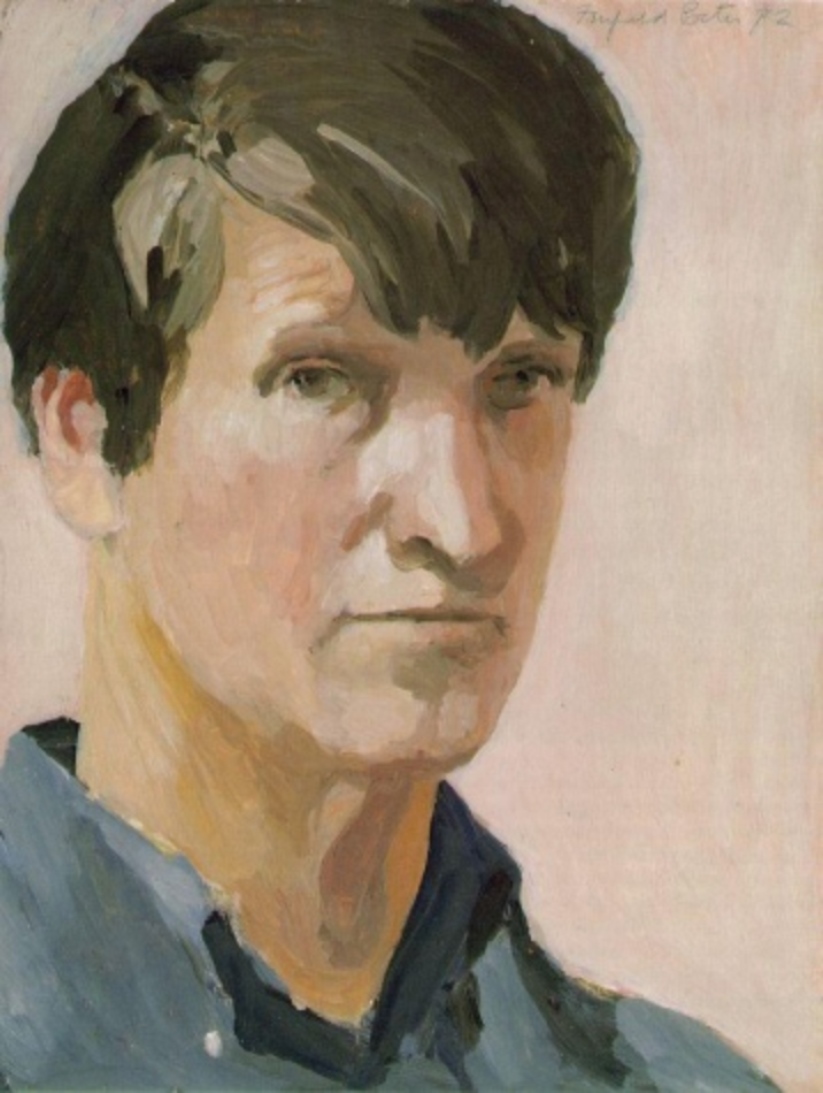
Fairfield Porter is an American artist known for his realistic paintings depicting his family, friends, and the natural environment. Porter began his career as an abstract painter, but later switched to a realistic style. His work is notable for its vibrant colors and his ability to convey the atmosphere and mood of his subjects. He is also known for his landscapes, including seascapes, which often depict his native Maine. Porter was also a professor at Stony Brook University in Manhattan and wrote several essays and articles on art. His work can be seen at the Museum of Modern Art in New York, the Metropolitan Museum of Art and the National Gallery of Art in Washington, DC.

Fairfield Porter is an American artist known for his realistic paintings depicting his family, friends, and the natural environment. Porter began his career as an abstract painter, but later switched to a realistic style. His work is notable for its vibrant colors and his ability to convey the atmosphere and mood of his subjects. He is also known for his landscapes, including seascapes, which often depict his native Maine. Porter was also a professor at Stony Brook University in Manhattan and wrote several essays and articles on art. His work can be seen at the Museum of Modern Art in New York, the Metropolitan Museum of Art and the National Gallery of Art in Washington, DC.
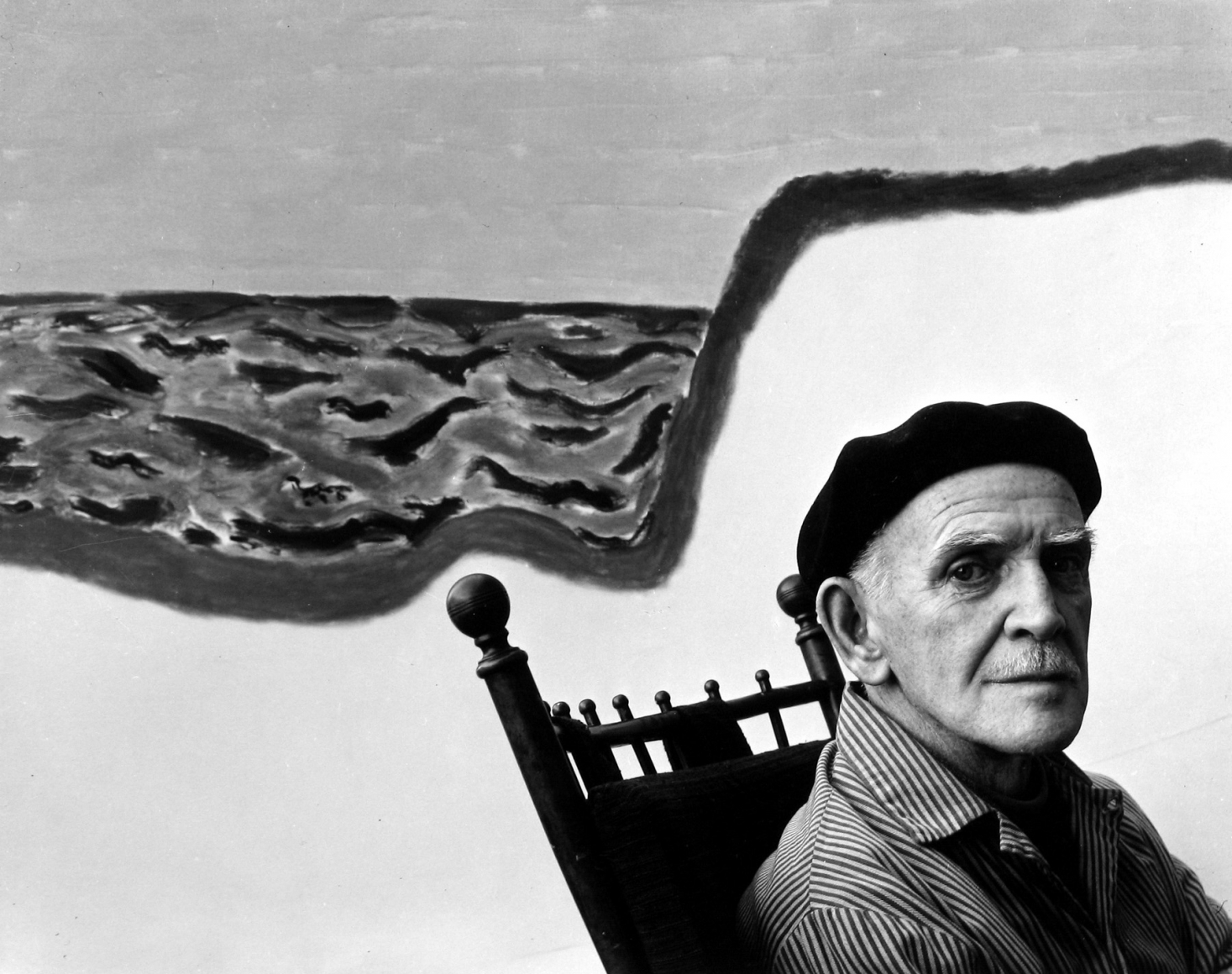
Milton Clark Avery was an American artist who, with his wife, the artist Sally Michelle Avery, created his own "Avery style. Avery was one of the most influential abstract artists in the United States in the mid-20th century.
His work is characterized by bright colors and recognizable geometric shapes. He often used these elements to create abstract compositions in which he placed great emphasis on the harmony of color and line. In addition to abstract works, Avery also created figurative paintings, often depicting landscapes and portraits. He used bright colors and strong contrasts to create emotional depth in his works.
Avery's work is held in many museums, including the Museum of Modern Art in New York, the Guggenheim Museum, and the National Gallery of Art in Washington, DC.

Milton Clark Avery was an American artist who, with his wife, the artist Sally Michelle Avery, created his own "Avery style. Avery was one of the most influential abstract artists in the United States in the mid-20th century.
His work is characterized by bright colors and recognizable geometric shapes. He often used these elements to create abstract compositions in which he placed great emphasis on the harmony of color and line. In addition to abstract works, Avery also created figurative paintings, often depicting landscapes and portraits. He used bright colors and strong contrasts to create emotional depth in his works.
Avery's work is held in many museums, including the Museum of Modern Art in New York, the Guggenheim Museum, and the National Gallery of Art in Washington, DC.

Milton Clark Avery was an American artist who, with his wife, the artist Sally Michelle Avery, created his own "Avery style. Avery was one of the most influential abstract artists in the United States in the mid-20th century.
His work is characterized by bright colors and recognizable geometric shapes. He often used these elements to create abstract compositions in which he placed great emphasis on the harmony of color and line. In addition to abstract works, Avery also created figurative paintings, often depicting landscapes and portraits. He used bright colors and strong contrasts to create emotional depth in his works.
Avery's work is held in many museums, including the Museum of Modern Art in New York, the Guggenheim Museum, and the National Gallery of Art in Washington, DC.
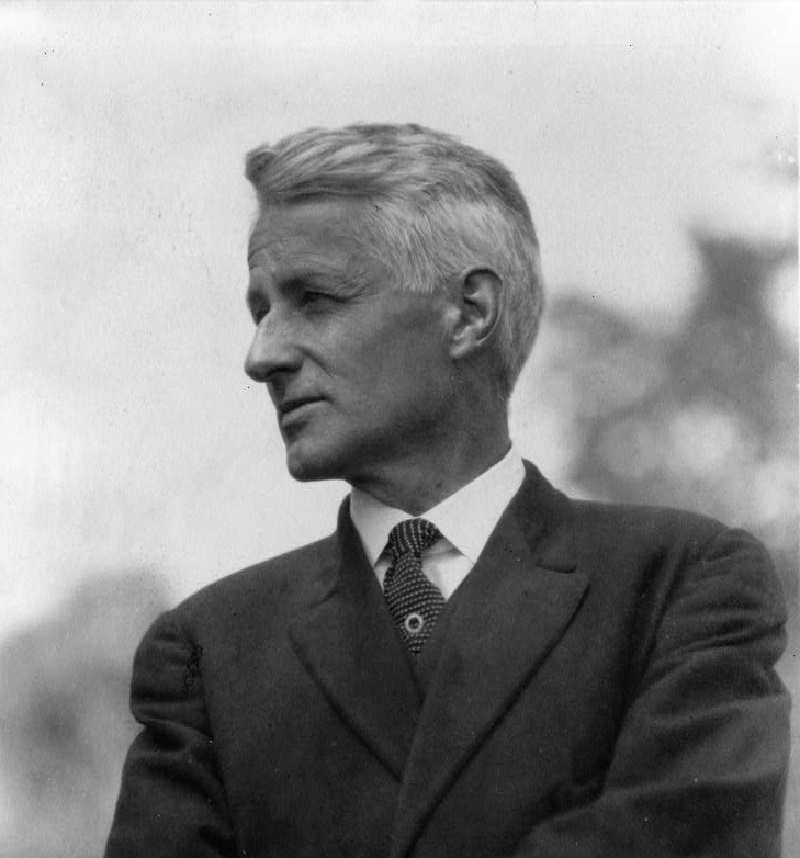
Maxfield Parrish was an American painter and illustrator active in the first half of the 20th century. He is known for his distinctive saturated hues and idealized neo-classical imagery. His career spanned fifty years and was wildly successful: the National Museum of American Illustration deemed his painting Daybreak (1922) to be the most successful art print of the 20th century.

Maxfield Parrish was an American painter and illustrator active in the first half of the 20th century. He is known for his distinctive saturated hues and idealized neo-classical imagery. His career spanned fifty years and was wildly successful: the National Museum of American Illustration deemed his painting Daybreak (1922) to be the most successful art print of the 20th century.
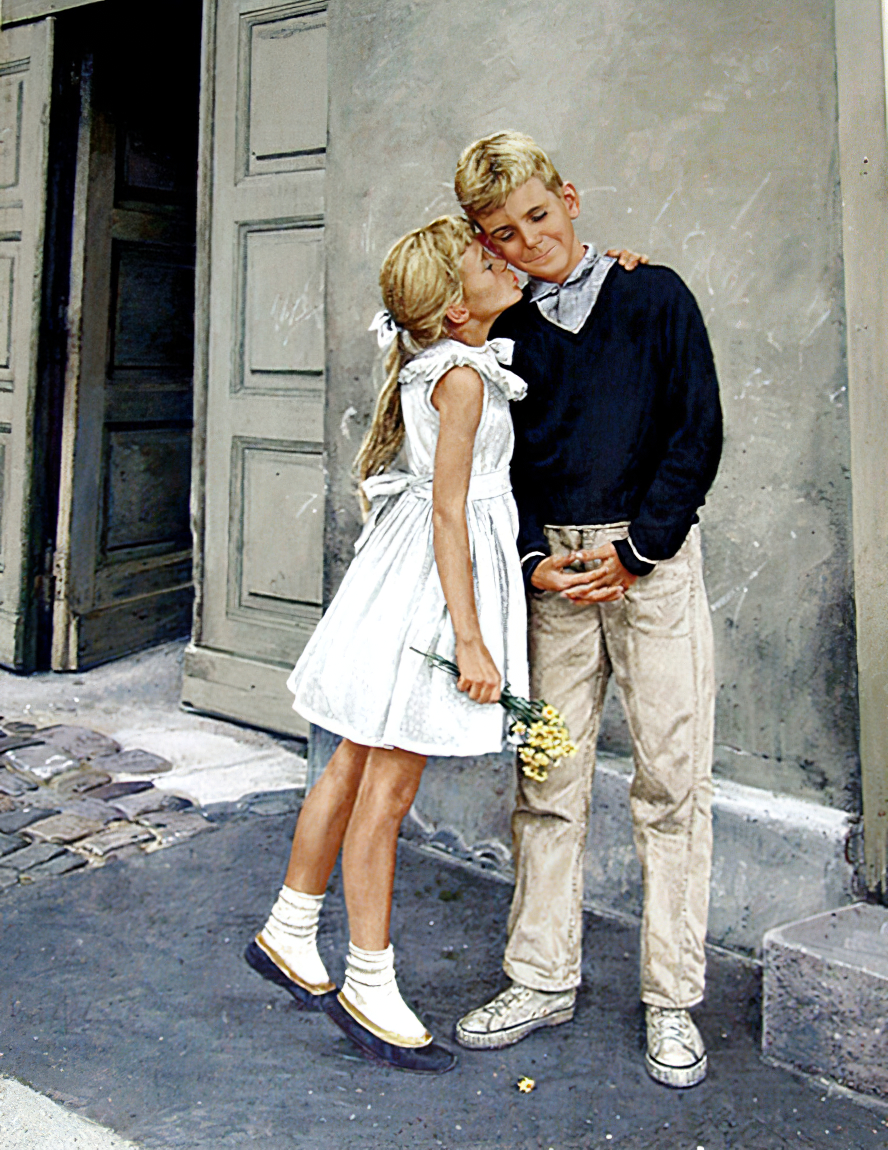
Kurt Ard was a Danish illustrator, painter and printmaker. He became internationally famous for his narrative cover artwork published in popular magazines of the 1950s-1970s, including the Family Journal, the Saturday Evening Post and Reader’s Digest. Ard started his career at various smaller newspapers and worked in the same realistic tradition as his role model, illustrator and painter, Norman Rockwell. During WW II, Kurt struggled to fulfill commission orders. His painting and his reputation and success grew steadily in the post war years. His illustrations soon appeared in major European publications, and he subsequently achieved international fame. Over the course of his career, Ard has sold more than 1000 illustrations to the best magazines in Europe, and to American publications such as McCalls, Good Housekeeping and Redbook. Today, Kurt continues to create exceptional figurative, landscape and seascape paintings with uncompromising authenticity , capturing the charm, beauty and power of these diverse subjects. His work is especially notable for its brilliant light and precise detail.
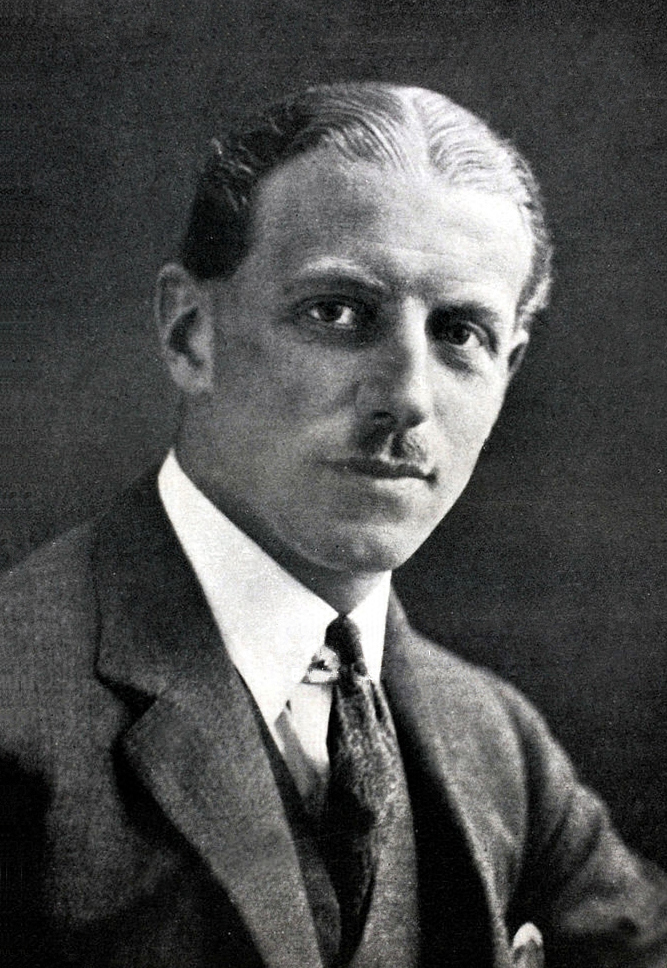
Norman Rockwell was an American illustrator and painter, renowned for his vivid and humane portrayal of American life. Born in New York City in 1894, Rockwell showed artistic promise from an early age, which led him to leave high school and pursue art full-time at prestigious institutions like the National Academy of Design and the Art Students League.
Rockwell's career blossomed early; by the age of 22, he had painted his first cover for The Saturday Evening Post, a relationship that would last nearly five decades and produce 323 covers. His depictions of everyday life and pivotal American moments captured the spirit of the nation.
Perhaps his most significant works were the "Four Freedoms" series, inspired by President Franklin D. Roosevelt's vision of a world founded on four essential human freedoms. These paintings not only graced the covers of The Saturday Evening Post but also played a crucial role in the U.S. war effort during World War II, raising over $130 million through the sale of war bonds.
In his later years, Rockwell did not shy away from addressing social issues. His move to Look magazine allowed him to focus on subjects such as civil rights and poverty, marking a significant shift from his earlier work. "The Problem We All Live With," depicting Ruby Bridges integrating a New Orleans school, remains a powerful symbol of the Civil Rights Movement and showcases Rockwell's ability to engage with contemporary social issues through his art.
For those interested in exploring Rockwell's extensive body of work, the Norman Rockwell Museum in Stockbridge, Massachusetts, holds the largest collection of his original art, providing insights into his artistic journey and the historical context of his works.
If you're keen on further updates and insights into the world of Norman Rockwell, consider signing up for our newsletter. This subscription will keep you informed about new exhibitions, sales, and auction events related to Rockwell's art.
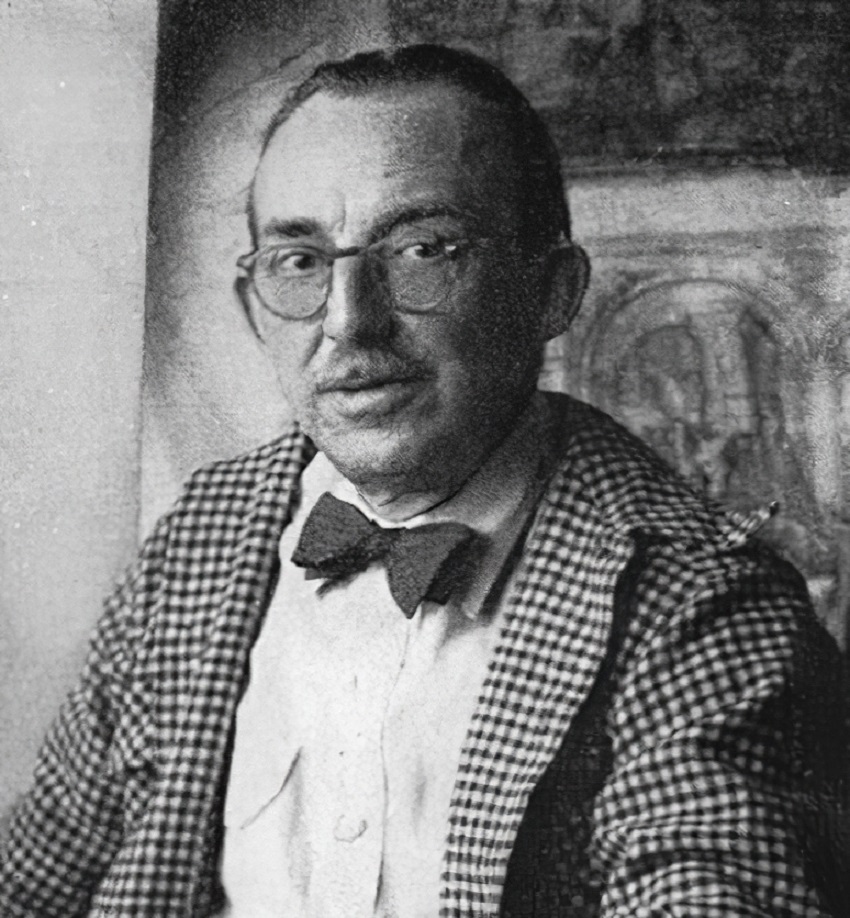
Dean Cornwell was an American illustrator and muralist. His oil paintings were frequently featured in popular magazines and books as literary illustrations, advertisements, and posters promoting the war effort. Throughout the first half of the 20th century he was a dominant presence in American illustration. At the peak of his popularity he was nicknamed the "Dean of Illustrators". He began his professional career as a cartoonist for the Louisville Herald. Soon thereafter he moved to Chicago, where he studied at the Art Institute and worked for the Chicago Tribune. Cornwell's paintings were in Cosmopolitan, Harper's Bazaar, Redbook, and Good Housekeeping magazines. He painted murals for the Los Angeles Public Library, the Lincoln Memorial Shrine in Redlands, California etc. Cornwell taught and lectured at the Art Students League in New York. He served as president of the Society of Illustrators from 1922 to 1926, and was elected to its Hall of Fame in 1959.
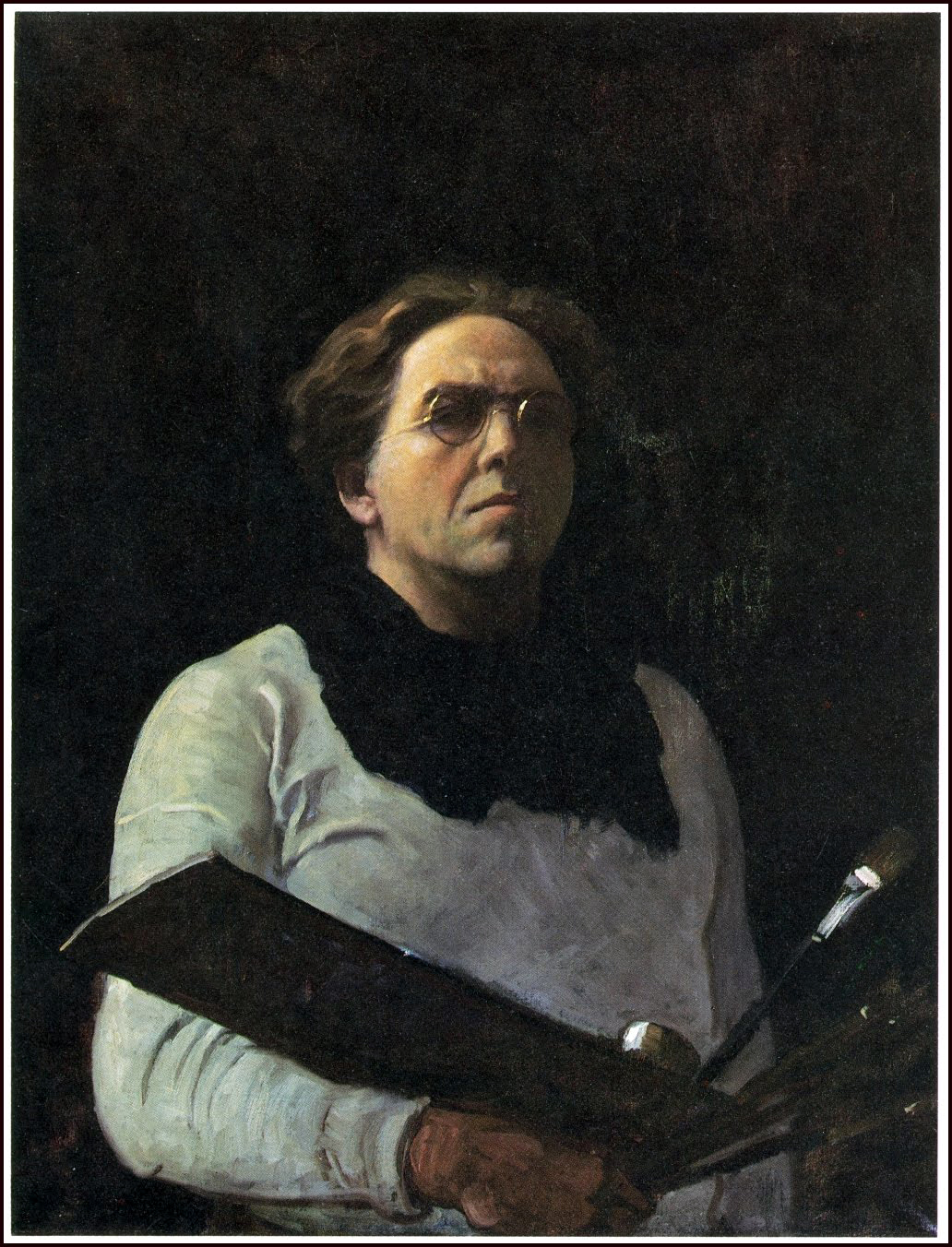
Newell Convers Wyeth, better known as N.C. Wyeth, was an American painter and illustrator, celebrated for his vivid and dramatic illustrations that brought to life classic literature for the Scribner’s Illustrated Classics series. Born on October 22, 1882, in Needham, Massachusetts, Wyeth displayed artistic talent from an early age, encouraged by his supportive mother. He trained under the tutelage of Howard Pyle, the "father of American illustration," who influenced him deeply, instilling a penchant for romanticism and historical accuracy in his work.
Wyeth’s illustrations for books like "Treasure Island," "The Last of the Mohicans," and "Robinson Crusoe" are among his most famous and have left a lasting legacy in the field of American illustration. His work was characterized by a robust, painterly style that effectively conveyed the adventure and emotion of the stories he illustrated. Beyond book illustrations, Wyeth also excelled in creating murals and was commissioned to paint for various public and private institutions, including banks and schools, depicting scenes that ranged from historical narratives to allegorical themes.
Despite his commercial success, Wyeth often expressed a desire to be recognized for his personal paintings, and he struggled with the commercial constraints of illustration. He explored a variety of artistic styles throughout his career, including Impressionism and Realism, and was an adept muralist as well as a studio artist. His legacy continues to influence artists and captivates art collectors and experts in the field, securing his place as a key figure in American art history.
For those interested in staying updated on exhibitions and sales related to N.C. Wyeth, consider signing up for updates focused on his works and related auction events.

Newell Convers Wyeth, better known as N.C. Wyeth, was an American painter and illustrator, celebrated for his vivid and dramatic illustrations that brought to life classic literature for the Scribner’s Illustrated Classics series. Born on October 22, 1882, in Needham, Massachusetts, Wyeth displayed artistic talent from an early age, encouraged by his supportive mother. He trained under the tutelage of Howard Pyle, the "father of American illustration," who influenced him deeply, instilling a penchant for romanticism and historical accuracy in his work.
Wyeth’s illustrations for books like "Treasure Island," "The Last of the Mohicans," and "Robinson Crusoe" are among his most famous and have left a lasting legacy in the field of American illustration. His work was characterized by a robust, painterly style that effectively conveyed the adventure and emotion of the stories he illustrated. Beyond book illustrations, Wyeth also excelled in creating murals and was commissioned to paint for various public and private institutions, including banks and schools, depicting scenes that ranged from historical narratives to allegorical themes.
Despite his commercial success, Wyeth often expressed a desire to be recognized for his personal paintings, and he struggled with the commercial constraints of illustration. He explored a variety of artistic styles throughout his career, including Impressionism and Realism, and was an adept muralist as well as a studio artist. His legacy continues to influence artists and captivates art collectors and experts in the field, securing his place as a key figure in American art history.
For those interested in staying updated on exhibitions and sales related to N.C. Wyeth, consider signing up for updates focused on his works and related auction events.
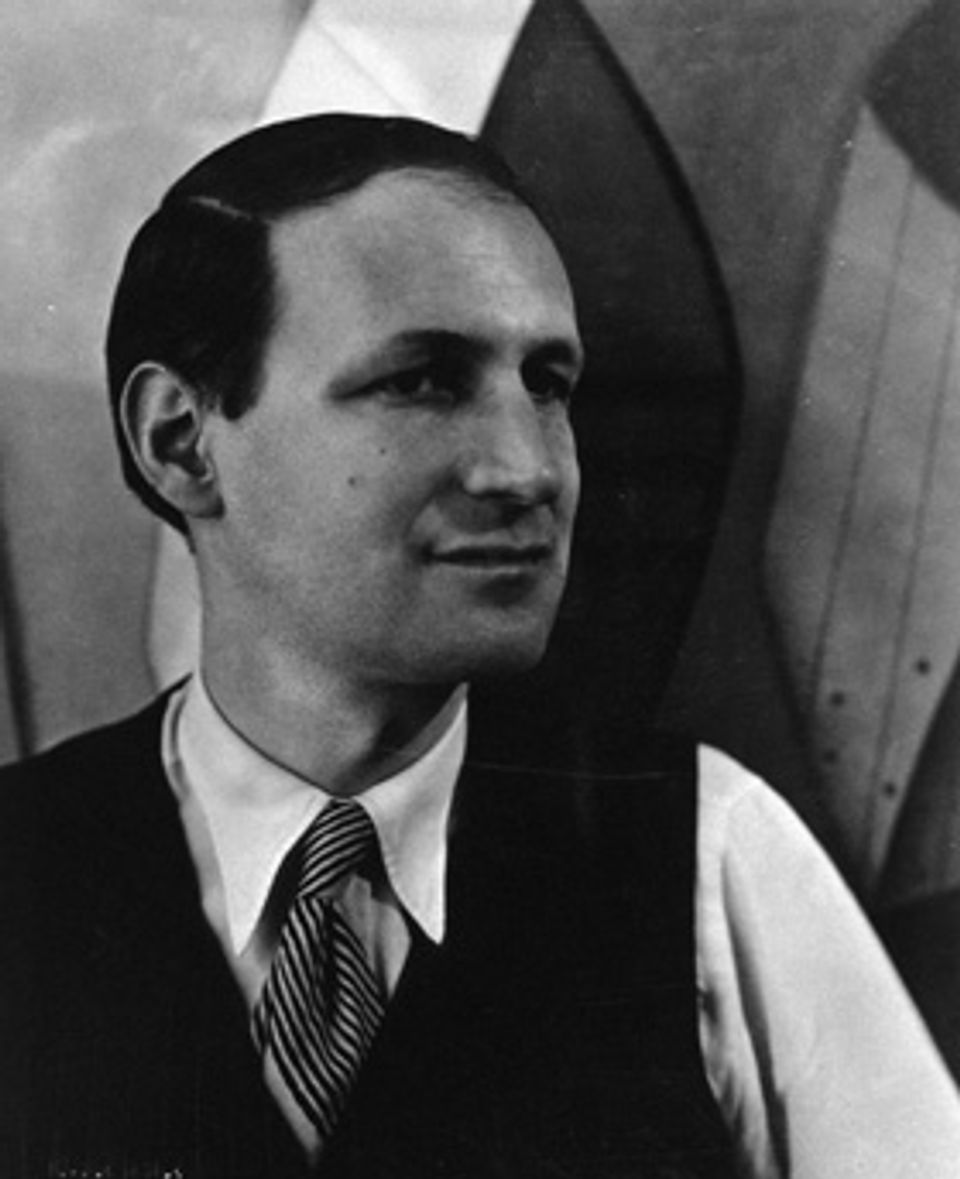
George Lovett Kingsland Morris is an American artist and designer best known for his work in the style of abstract expressionism.
Morris began his career as a cartoonist and illustrator for magazines and advertising agencies, but later moved on to painting and abstract painting in particular. In the 1930s he was one of the founders of the Abstract Art League, which promoted abstract expressionism in the United States. In the 1940s Morris was a major contributor to the Abstract Expressionist movement in New York.
Many of Morris's works, including his paintings, drawings, and graphics, are in the permanent collections of the Museum of Modern Art in New York, the Guggenheim Museum, and the New York Public Library.

George Lovett Kingsland Morris is an American artist and designer best known for his work in the style of abstract expressionism.
Morris began his career as a cartoonist and illustrator for magazines and advertising agencies, but later moved on to painting and abstract painting in particular. In the 1930s he was one of the founders of the Abstract Art League, which promoted abstract expressionism in the United States. In the 1940s Morris was a major contributor to the Abstract Expressionist movement in New York.
Many of Morris's works, including his paintings, drawings, and graphics, are in the permanent collections of the Museum of Modern Art in New York, the Guggenheim Museum, and the New York Public Library.
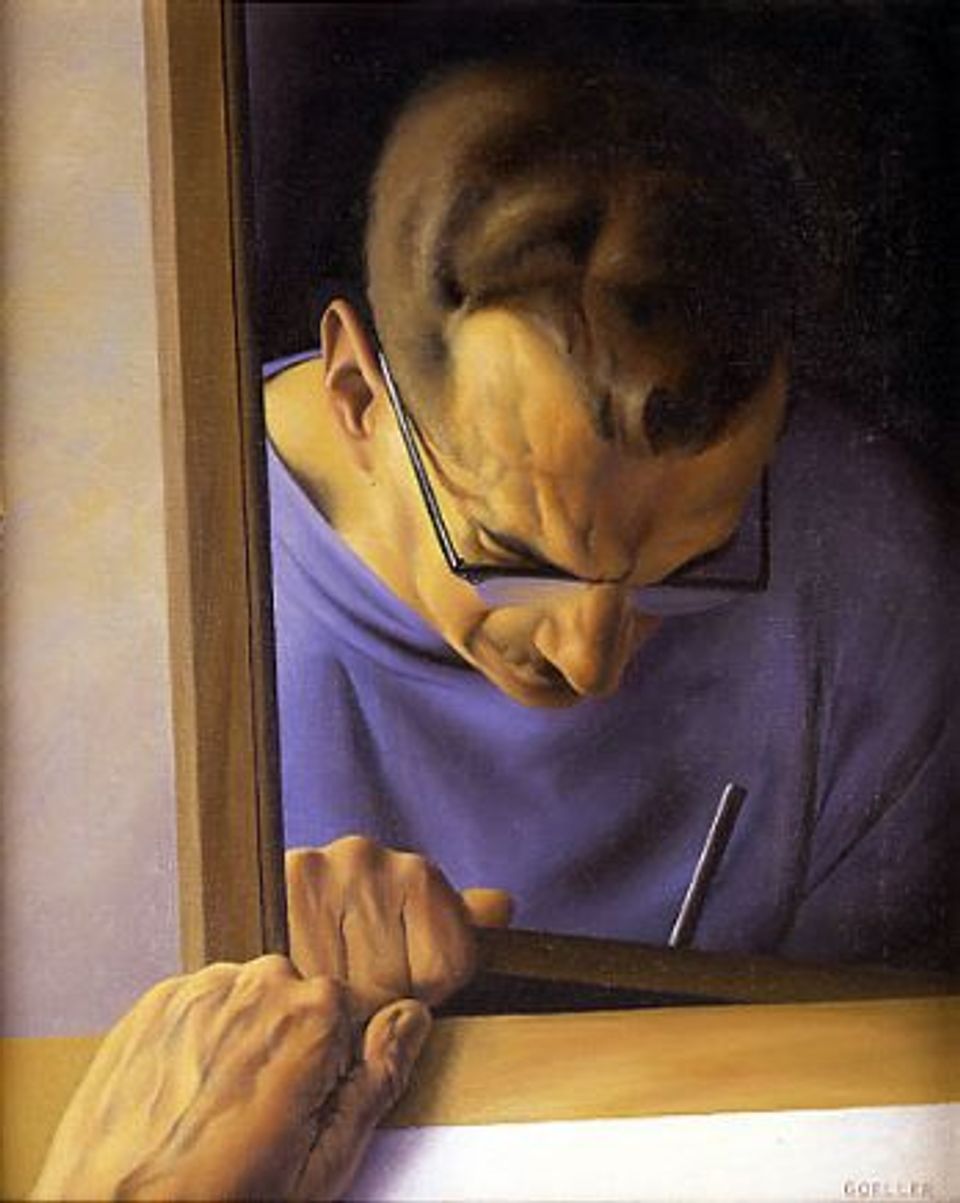
Charles Louis Goeller was an American artist best known for his precise and detailed paintings and drawings, in which he once said he sought to achieve "emotion expressed by precision." Among the subjects of his work are still lifes, portraits, and cityscapes.
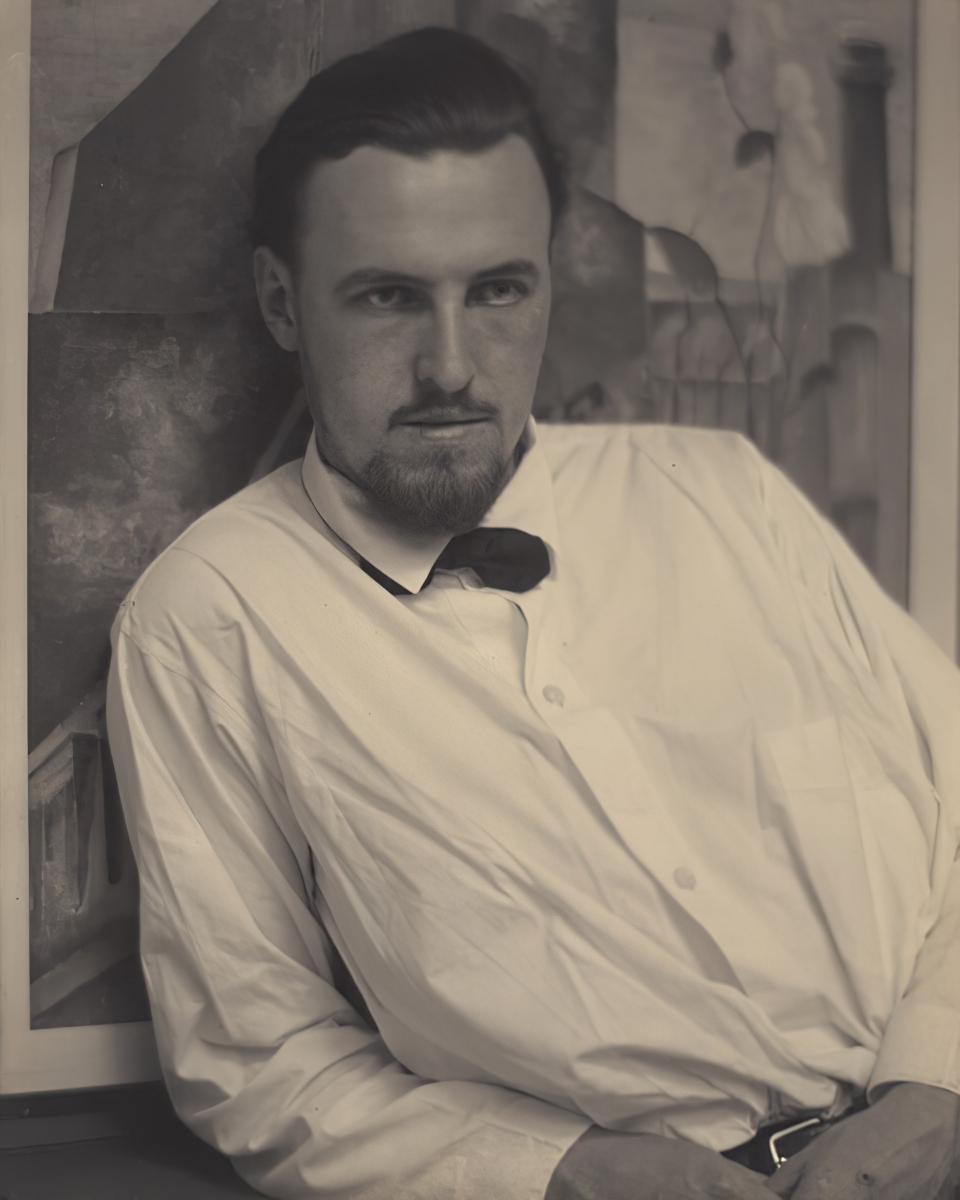
Konrad Cramer was a German-born American painter. He was trained at the Academy of Fine Arts in Karlsruhe, and he emigrated to the United States in 1911. A naturalized U.S. citizen, he is "often credited as being an important link between German and American modernism in art."

Charles Louis Goeller was an American artist best known for his precise and detailed paintings and drawings, in which he once said he sought to achieve "emotion expressed by precision." Among the subjects of his work are still lifes, portraits, and cityscapes.
